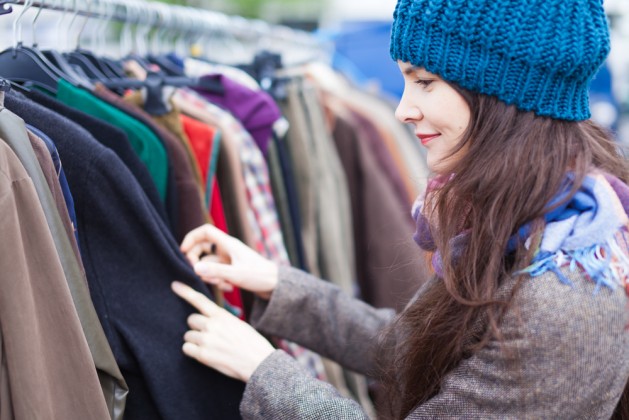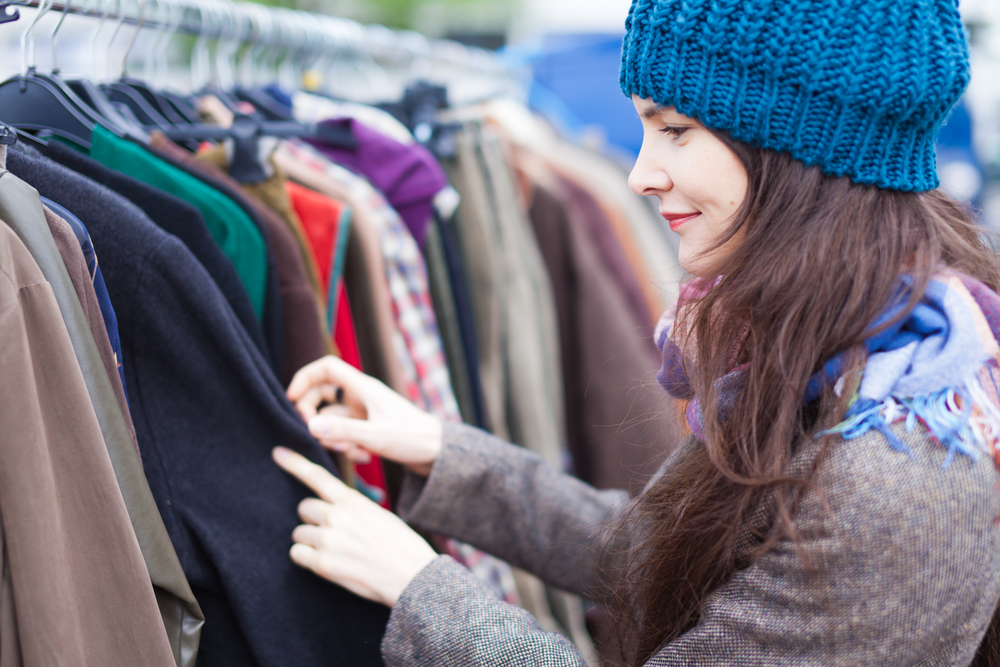
Fashion culture has changed a lot since the 20th century. While you could track where we are today from the Industrial Revolution, WWII fabric restrictions, and globalization, the fact is that never before has so much clothing been made so quickly, and then discarded after so few uses. In some ways, fashion has become more democratic and accessible to a wider population. And stores have responded with a dizzying turnover of trends because, let’s be honest, fashion – from designer bags to Air Jordan shoes – is about standing out from those who can’t get or don’t know the newest look.
While clothes from Walmart, Target, or H&M are cheap for consumers, that doesn’t reveal the real cost of making them. To buy a $5 cotton T-shirt, cotton must be grown (a notoriously resource intensive crop), harvested, transported, spun and woven, transported to a factory, sewn together by a human being for pennies an hour, then shipped and shipped again until it reaches the store where you bought it. All that takes a lot of water (thousands of liters per shirt), energy, and a reduction of human dignity.
Untangling the ethical and environmental concerns of the garment and fashion industry and keeping companies accountable to the factory workers they depend on is frustratingly difficult even for those devoted to it. Changing one habit will not over turn this system. But it is notable that the rise of fast fashion has to do with consumer demand.
Brands that couldn’t provide massive quantities of cheap, trendy clothing on demand have suffered. It seems that consumers are buying a couple luxury items they expect to last and lots cheap stuff that isn’t built to hold up after more than a few washings.
Americans throw out around 13 million tons of clothing every year. Which means that all the water and energy going into those clothes, in a way, ends up in a landfill, too. Even beyond wasted resources, clothes that biodegrade release greenhouse gases like methane, and most synthetic fibers, like polyester, won’t break down well after everyone you know and their grandkids die.
Now that I have you depressed and thinking about kids who haven’t even been conceived yet dying, let’s talk about something seemingly superficial. Do you even like your cheap clothes? Do they not immediately start to pill and unravel after a single wash? Doesn’t the shine of wearing them wear off as quickly as a trend dies out? If the price is literally the best thing about a shirt, maybe you don’t really want it. One cheap shirt isn’t a big hit on your budget, but if your wardrobe is primarily fast fashion, and you feel like you need to buy a new wardrobe every year, the cost adds up.
If you want high-quality clothing for a decent price, secondhand is the way to go. It doesn’t make sense for secondhand stores to sell worn-out or poorly made goods since the retail value isn’t worth it. You’ll see high-end brand names, even designer goods, at secondhand shops. (If you’ve ever tried selling clothes to a secondhand shop, you know how picky they can be.) It’s not difficult to buy nice things secondhand, in fact, it’s much easier than trying to wade through a T.J. Maxx or Marshall’s for that one good find.
I know there’s a concern that secondhand clothing is either a sign of poverty or insufferable hipsterdom, but unless you say where you bought your clothes, no one will know. If you’re worried about who else wore those items, remember that several pairs of hands have touched new clothes in the making, transporting, and displaying anyway.
Buying used clothing means that you’re committed to reusing the original resources invested in those pieces of clothing. It also means that you’re not rewarding the businesses that participate in fast fashion with your consumer dollars. If consumers played a role in the creation of fast fashion, then perhaps consumers can also play a part in dismantling it.
Again, buying secondhand will not solve all the issues in the garment industry. Some people will not find their size in a secondhand store, some people can only afford very cheap clothes, and clothes in a thrift shop still had to be produced somehow. Plus Goodwill, one of the largest businesses of the secondhand market, has fair wage concerns of its own.
Sometimes, you will need to buy new clothes, and when you do, choose clothing for longevity of both quality and style and from companies that make an effort to have a transparent supply chain. The best mode of action, though, is to simply buy less if you can.



